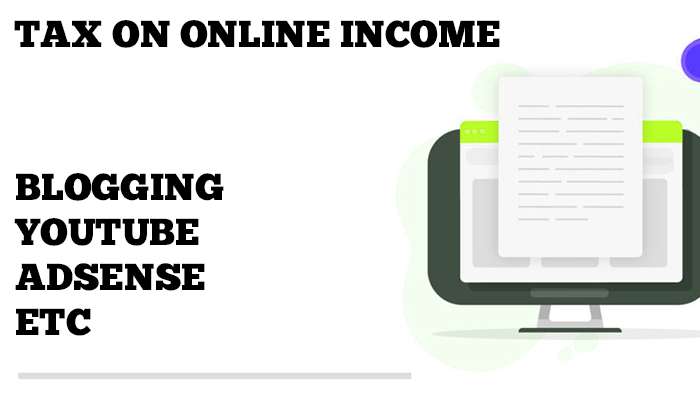Table of Contents
What is MAT – Minimum Alternate Tax?
MAT stands for Minimum Alternate Tax, described as a direct tax that has to be paid by the companies that are enjoying tax benefits or tax exemptions, instead of having huge profits, under various schemes framed under Income Tax Act.
Now after the insertion of Minimum Alternate Tax Provisions companies have to pay a particular amount of tax termed as MAT, so they come under the tax net under section 115JB.
Read Choose from Paytm First vs Ola Money Credit Card
Applicability of Minimum Alternate Tax
Provisions of MAT are applicable to all companies including foreign companies whose liability to pay income tax calculated as per normal provisions are less than the liability under MAT provisions.
Calculation of MAT
Before proceeding on how MAT is calculated, first provisions related to MAT calculation is important to learn:
1. Income tax Payable shall be the higher of the following amounts:
- Tax on total income computed as per the normal provisions of the Income Tax Act (30% on domestic companies and 40% on foreign Companies)
- Add Surcharge: If total income exceeds ₹ 1 crore
- Domestic Companies: 7% (12% if income exceeds ₹ 10 crores)
- Foreign Companies: 2% (5% if income exceeds ₹ 10 crores)
- Add Surcharge: If total income exceeds ₹ 1 crore
- Less Marginal Relief, if total income exceeds Rs.1 crore {Formula: Tax on ₹ 1 crore + (Total Income – ₹ 1 crore)}
- Education Cess: 4% on Tax Payable + Surcharge.
- Tax on total income computer under MAT provisions (at present 18.5%)
- Add Surcharge: If total income exceeds ₹ 1 crore
- Domestic Companies: 7% (12% if income exceeds ₹ 10 crores)
- Foreign Companies: 2% (5% if income exceeds ₹ 10 crores)
- Add Surcharge: If total income exceeds ₹ 1 crore
- Less Marginal Relief, if total income exceeds Rs.1 crore {Formula: Tax on Rs. 1 crore + (Total Income – Rs. 1 crore)}
- Education Cess: 3% on Tax Payable + Surcharge.
Let us understand with an example: Sanyam Ltd. has given you the following figures to calculate the tax payable for Assessment Year 2019-20.
- Taxable Income as per normal provision of Income Tax Act – ₹ 50,00,000
- Book Profits as per section 115JB – ₹ 1,01,00,000
First of all calculate tax as per normal provisions of Income Tax
- Tax Payable @ 30% plus edu cess of 4% – 31.20% of 50,00,000 = ₹ 15,60,000
- No Marginal Relief, since the income does not exceed ₹ 1 crore.
Now compute tax payable as per MAT provisions
- Tax payable @ 18.5% + Surcharge @ 7% – 19.795% of ₹ 1,01,00,000 = ₹ 19,99,295.
- Since Income Exceeds ₹ 1 crore, Marginal Relief is to be calculated (i.e. the amount of tax and surcharge cannot exceed the tax calculate under Marginal Relief)
- Tax on ₹ 1 crore + (₹ 1,01,00,000 – ₹ 1 crore) = Rs. 19,50,000
- Total Marginal Relief = ₹ 19,99,295 – ₹ 19,50,000 = ₹ 49,295
- Education Cess @ 4% on ₹ 19,50,000 = ₹ 78,000
- Total Tax Payable under MAT = ₹ 19,50,000 + ₹ 78,800 = ₹ 20,28,000.
Hence, Tax Payable by Company = ₹ 20,28,000
There is a credit of MAT of ₹ 4,68,000, which can be carried forward to 15 assessment year.
MAT Credit under Section 115JAA
A tax credit scheme is introduced by which MAT paid can be carried forward for set-off against regular tax payable during the subsequent fifteen years period subject to certain conditions, as under:-
- When a company pays tax under MAT, the tax credit earned by it shall be an amount which is the difference between the amount payable under MAT and the normal tax. Normal tax, in this case, means the tax payable on the basis of normal computation of total income of the company.
- MAT credit will be allowed to carry forward facility for a period of 10 assessment years immediately succeeding the assessment year in which MAT is paid. Unabsorbed MAT credit will be allowed to be accumulated subject to the 10 years carry forward limit.
- In the assessment year when regular tax becomes payable, the difference between the regular tax and the tax computed under MAT for that year will be set off against the MAT credit available.
- In case of conversion of the company into a Limited Liability Partnership under the Limited Liability Partnership Act, 2008, MAT credit available in hands of the company shall not be allowed to the LLP.
- The credit allowed will not bear any interest.
MAT credit can be better explained with the help of an illustration. So let’s try to understand it with the help of an example:
| Asst Year | Tax Payable under MAT | Tax Payable as per normal provisions | Actual Tax payable* | Tax Credit Available u/s 115JAA | Tax Credit Set off/ adjusted | Total Tax Credit Available |
| 2015-16 | ₹ 11,43,300 | ₹ 3,09,000 | ₹ 11,43,300 | ₹ 8,34,300 | – | ₹ 8,34,300 |
| 2016-17 | ₹ 9,14,640 | ₹ 4,94,400 | ₹ 9,14,640 | ₹ 4,20,240 | – | ₹ 12,54,540 |
| 2017-18 | ₹ 13,33,850 | ₹ 15,75,900 | ₹ 13,33,850 | – | ₹ 2,42,050 | ₹ 10,12,490 |
| 2018-19 | ₹ 5,71,650 | ₹ 1,54,500 | ₹ 5,71,650 | ₹ 4,17,150 | – | ₹ 14,29,640 |
| 2019-20 | ₹ 28,01,085 | ₹ 48,66,740 | ₹ 34,37,110 | – | ₹ 14,29,640** | – |
- Tax Paid for the relevant assessment year cannot be less then tax computer in column 2.
- Credit can be allowed to be adjusted to the maximum extent of total credit available.
- No interest is payable on the tax credit available under section 115JAA.



